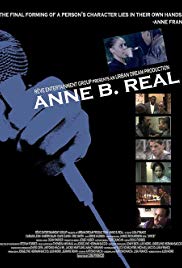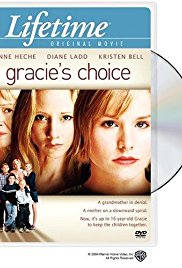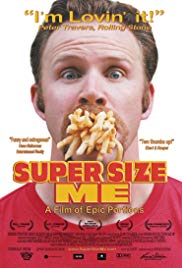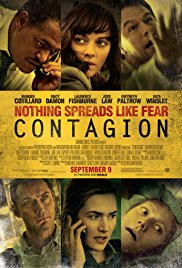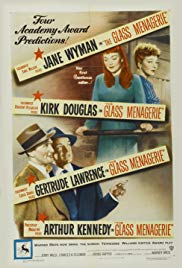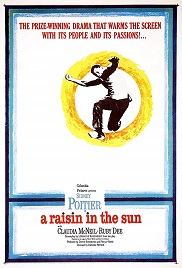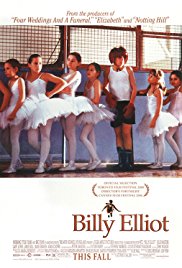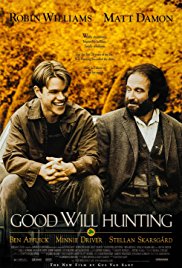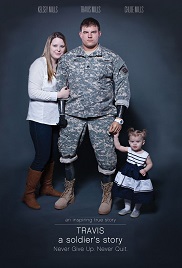THE BEST OF TEACH WITH MOVIES
TWM recommends these movies as the best of the best in meeting curriculum standards while providing students with stellar educational experiences.
Give us your input! Email your nominations and a description of your reasons, including your experience with the film. Tell us the name of your school and what grades you teach. You might find yourself in print.
Don’t ignore the great teaching opportunities from other movies! Review our extensive Drama index.
Check the list from time to time. We’ll change it depending on your feedback and our experience. It’s an ongoing conversation.
ALCOHOLISM AND DRUG ABUSE
Anne B. Real
Cynthia Gimenez is a black, Hispanic teenager living in the slums of New York City. Her father, a school teacher, has recently died, throwing the family into poverty. Her brother is a drug addict; her sister, an unwed mother. Before her father died, he gave Cynthia a copy of Anne Frank: The Diary of a Young Girl. Anne Frank’s insights into adolescence help Cynthia through her daily struggle to survive. The movie shows in stark relief what drug addiction can do to an addict and his family. [Ages: 12+]
Gracie’s Choice
The story of a teenage girl with four younger siblings, a drug-addicted mother, and co-dependent grandmother. Gracie manages to keep her family together through hard work and perseverance, eventually convincing a court to allow her to adopt her younger brothers over her mother’s objection. At the end of the movie, Gracie is living the life of a single mother and bettering herself by taking courses at a community college. Most of the movie is an accurate representation of reality. The TeachWithMovies.org Learning Guide tells what is true and what was left out. This movie shows the devastating effects of drug addiction on a family and codependence in operation. However, the most important lesson comes from the actions of Gracie, a girl who overcomes a great difficulty, keeps her family together, and progresses with her life. Gracie’s Choice will give students in health classes a visceral understanding of these lessons. [Ages: 12+]
When a Man Loves a Woman
With a Lesson Plan on Alcohol Abuse and Alcoholism — This movie provides an excellent description of alcoholism and its effects on a marriage. Michael has learned to protect Alice from the consequences of being drunk. He sees someone he loves in pain and does what he can to reduce that pain. Alice encourages this behavior because it allows her to live an intoxicated life without paying the price. Over the years, Michael’s enabling behavior has become deeply embedded in the couple’s relationship.
Mid-way through the movie, Alice hits bottom and realizes that she has a serious problem. She enters a treatment center and returns home desperately trying to stay sober. Alice soon comes to understand that Michael’s enabling behaviors are dangerous to her recovery. Their marriage is put under tremendous strain as Alice insists that Michael change the way he relates to her. The last third of the movie shows how the couple struggles to adjust to Alice’s new persona and the altered terms of their relationship. All of this is done with emotional insight and cinematic skill. [Ages: 13+]
GRIEVING
Fly Away Home
This film traces the grieving process of a 13-year-old girl whose mother was killed in a car accident. [10+]
OBESITY AND FAST FOOD
Super Size Me
Morgan Spurlock ate nothing but food from McDonalds for 30 days: breakfast, lunch, and dinner. He was thoroughly tested by doctors before he started his “diet”. By the end of his experiment, the changes in his blood chemistry and the stress on his organs approximated the liver failure seen in advanced alcoholics, his cholesterol had risen to dangerous levels, and he had gained 24.5 lbs. He was fast on his way to becoming another casualty of the obesity epidemic.
The TeachWithMovies.org Movie Lesson Plan for Super Size Me contains a detailed student handout, lecture notes, discussion questions, class projects, and a comprehension test with an answer key. The film and the Lesson Plan can help students resist obesity. Most certainly, students will never see fast food in the same light. [Ages: 11+]
TRANSMISSION OF INFECTIOUS DISEASE
Contagion
(Health; Medicine; Science-Technology; U.S. 1991 – present; World/Asia; SEL: Courage; Surviving; Moral-Ethical Emphasis: Responsibility; Citizenship) [13+]
FAMILY SYSTEMS AND DYNAMICS
There are hundreds of films that can be effectively used to demonstrate the dynamic of family relationships. Anne B. Real, When a Man Loves a Woman, and Gracie’s Choice all show family dynamics in stressed family systems. Here are a few more of our favorites:
The Glass Menagerie
A film version of Tennessee Williams’ classic play about a child separating from his family and leaving home. The father has already left. The daughter shies away from any new experience and can’t finish school. Her life is confined to her collection of glass figurines and her father’s collection of old phonograph records. The mother is at her wit’s end. The adult son, whose paycheck supports the family, is being drawn away by his need to seek his own life. This film is an excellent example of the artistry of Tennessee Williams and the genre of the “memory play”. It is a classic of American Drama. The TeachWithMovies.org Learning Guide to The Glass Menagerie will show teachers and parents how to help adolescents understand the issues faced by many children when they make a decision about whether to leave home. [Ages: 12+]
A Raisin in the Sun
Best known as a tale of a black family facing racism in Chicago. However, it is also a compelling tale of family dynamics, of a mother shepherding a difficult son into adulthood, of a husband and wife working through problems in their relationship, and of a family dealing with an unplanned pregnancy. [Ages: 12+]
Billy Elliot
a warmhearted story of a boy finding his way to a career in ballet. It is set against the background of the 1984 English coal miners strike, a watershed event in modern British history. The film shows the benefits of breaking out of a restricted and impoverished environment, the redemptive agency of love in a family under enormous stress, a father coming through as a parent after some egregious errors, the far-reaching influence that a dedicated teacher can have on a child’s development, and how a friendship can survive the fact that one boy is homosexual and the other is not. [Ages: 12+]
THE USE OF THERAPY TO CURE MENTAL ILLNESS OR NEUROSIS
Good Will Hunting
Will Hunting is a macho young man from a working-class neighborhood in Boston. To outward appearances his life revolves around unskilled jobs, hanging out with friends, fighting, and getting in trouble with the law. But Will spends a lot of time reading books, storing information in his photographic memory. His mathematical intelligence is exceptional and he can easily solve problems of higher math that elude distinguished professors. An orphan, Will grew up in a series of foster homes in which he was repeatedly beaten. As a result, Will has classic attachment disorder. He cannot form trusting relationships with adults or with women. He cannot control his anger. He cannot integrate his intelligence into his relationships with others, in either social or work environments. Will’s only affectionate attachments are to a group of three young men from his neighborhood who cannot begin to match his intelligence. Good Will Hunting traces the successful treatment of Will’s attachment disorder, providing an excellent basis for studying the origin and treatment of this psychological condition. Filled with wisdom and compassion, the movie shows the power of talking therapy and gives an example of the life-changing insights that can be provided by psychology. The film is also a springboard for discussions about the role of dependence, independence and interdependence in human life and the importance of love and consistency in parenting. The movie also shows the young male culture of cruelty and demonstrates that the need to be tough leads to a dead end. The movie shows loyalty and wanting the best for your friends — the essence of a loving friendship. It can also reach some of the several students in every class (as many as a third) who have been physically or sexually abused. [Ages: 14+]
RESILIENCE
Travis: A Soldier’s Story
(Health) (Resilience); U.S. 1991 – Current; World/Afghanistan; SEL: Courage in War; Surviving; Moral-Ethical Emphasis: Responsibility) [14+]

